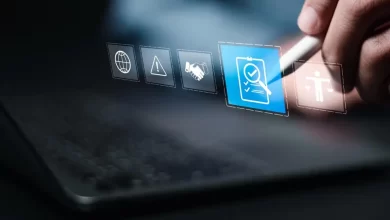Cybersecurity Essentials: Protecting Your Digital Assets

In today’s digital age, our lives are more interconnected than ever before. We rely on the Internet for everything from banking and shopping to communicating and working. While this connectivity offers unparalleled convenience, it also exposes us to a myriad of cyber threats. Protecting your digital assets is crucial in safeguarding your personal and professional information. This article will delve into essential cybersecurity practices that can help you fortify your digital defences.
Cyber threats come in various forms, and understanding them is the first step in protecting yourself. Here are some common types:
- Phishing: Fraudulent attempts to obtain sensitive information by pretending to be a trustworthy entity via email, social media, or other online communication.
- Malware: Malicious software designed to damage or disrupt systems, steal data, or gain unauthorized access to networks.
- Ransomware: A type of malware that encrypts a user’s files and demands a ransom for their decryption.
- Man-in-the-Middle (MitM) Attacks: When an attacker intercepts communication between two parties to steal or manipulate the data.
1. Use Strong, Unique Passwords
A strong password is your first line of defence. Avoid common passwords like “123456” or “password”. Instead, use a combination of letters (both uppercase and lowercase), numbers, and special characters. Each account should have a unique password to prevent a single breach from compromising multiple accounts.
Example: Instead of using “JohnDoe123”, use “J0hn!D0e*2024”.
2. Enable Two-Factor Authentication (2FA)
Two-factor authentication adds an extra layer of security by requiring not only a password but also a second form of verification, such as a text message code or an authentication app.
Example: Google Authenticator and Authy are popular 2FA apps that can secure your online accounts.
3. Keep Software Updated
Regularly update your operating systems, browsers, and software applications. These updates often include security patches that fix vulnerabilities.
Example: Set your devices to update automatically to ensure you never miss an important security patch.
4. Be Cautious with Email and Links
Phishing attacks are common, and they often come through email. Be wary of emails from unknown senders and avoid clicking on suspicious links or downloading attachments.
Example: If you receive an unexpected email from your bank, call them directly using a known number instead of clicking on links in the email.
5. Use Antivirus and Anti-Malware Software
Install reliable antivirus and anti-malware software to detect and remove threats. Keep this software updated to protect against the latest threats.
Example: Norton, McAfee, and Bitdefender are popular choices for comprehensive protection.
6. Backup Your Data Regularly
Regular backups ensure that you can recover your data in the event of a ransomware attack or other data loss incidents. Use both cloud storage and physical backups for redundancy.
Example: Schedule automatic backups to an external hard drive and a cloud service like Google Drive or Dropbox.
7. Secure Your Wi-Fi Network
Ensure your home Wi-Fi network is secure by using a strong password and enabling WPA3 encryption. Change the default SSID and admin password for your router to something unique.
Example: Avoid using easily guessable SSIDs like “Home” or “Wi-Fi” and opt for something unique like “MySecureNet123”.
8. Be Mindful of Public Wi-Fi
Public Wi-Fi networks are often insecure. Avoid accessing sensitive information or conducting financial transactions on public networks. Use a Virtual Private Network (VPN) for a secure connection.
Example: ExpressVPN and NordVPN are reputable services that can secure your internet connection on public Wi-Fi.
9. Educate Yourself and Others
Stay informed about the latest cybersecurity threats and best practices. Educate your family, friends, and colleagues to foster a culture of security awareness.
Example: Follow cybersecurity blogs, attend webinars, and participate in training sessions to stay updated.
Protecting your digital assets is not a one-time task but an ongoing process. By implementing these essential cybersecurity practices, you can significantly reduce your risk of falling victim to cyber threats. Stay vigilant, stay informed, and prioritize your digital security.
For further reading and resources, check out the following:
By taking proactive steps today, you can protect your digital life from the ever-evolving landscape of cyber threats.



